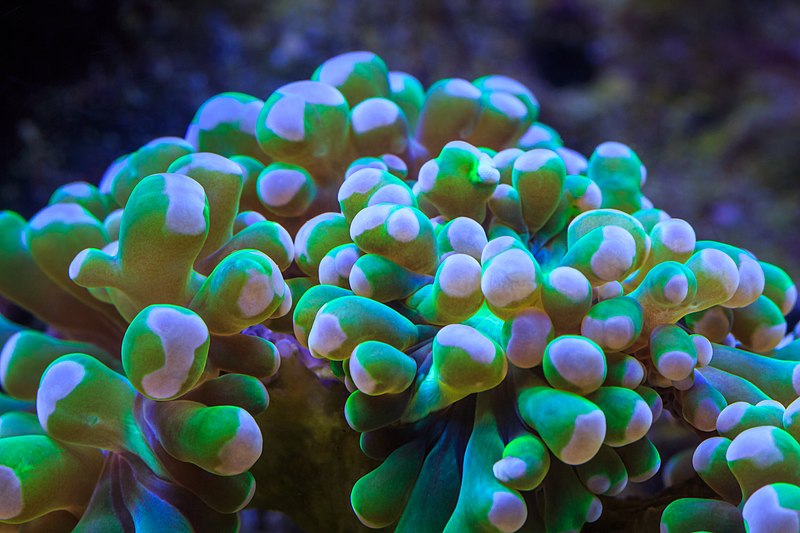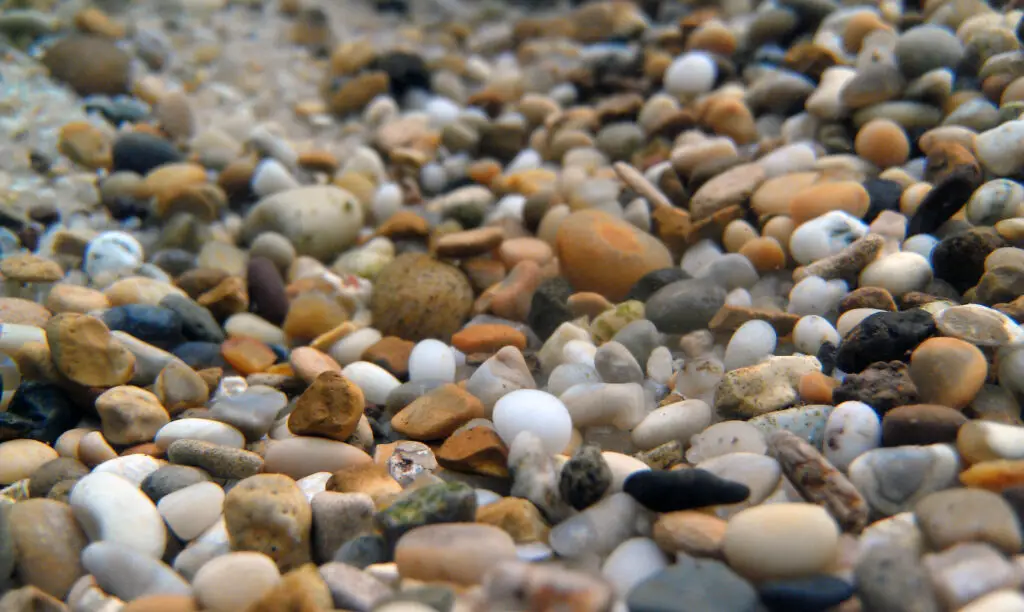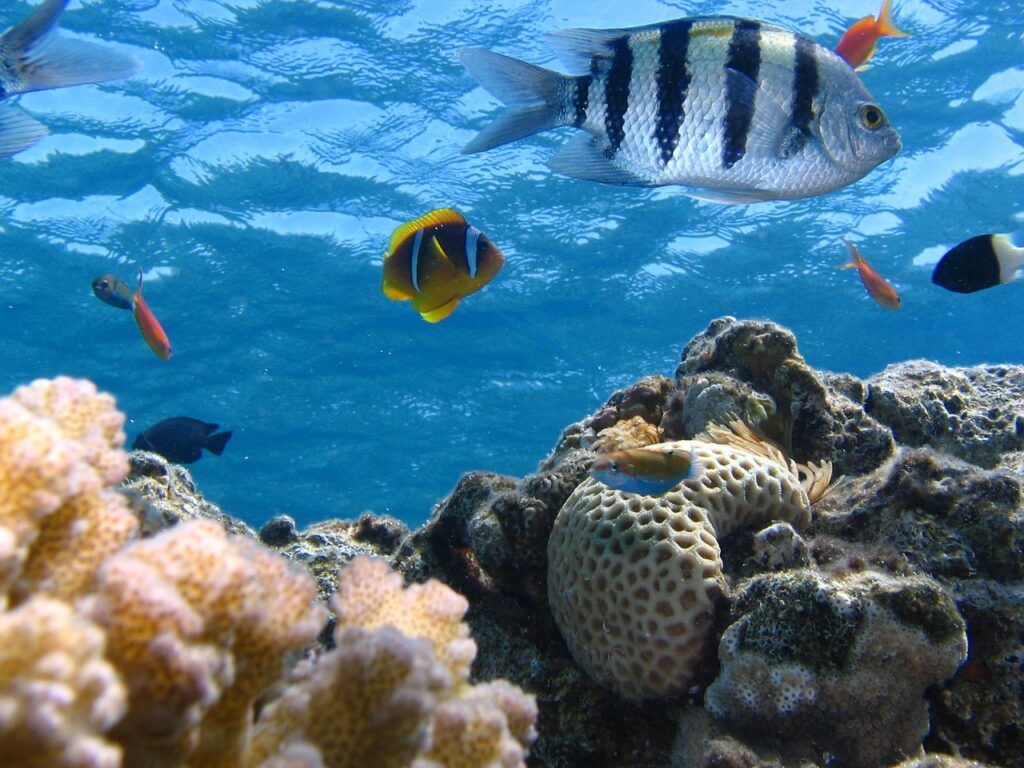Have you been on the hunt for a new coral you can add to your tank that doesn’t require a whole lot of extra effort to care for but still looks fantastic?
Look no further than hammer coral, then!
Dropdead gorgeous, this large polyp and “stony” coral species brings a whole lot to the table regardless of whether or not you are brand-new to keeping coral or a bit of an old hand.
Capable of producing their own exoskeleton with beautiful, bright, almost phosphorescent colors, this coral is also photosynthetic, effortlessly frags, and has the potential for some pretty extreme growth without a whole lot of extra effort, either.
Sound like something you’re interested in?
Then you’ll want to check out the rest of this detailed guide for more details!
Hammer Corals 101
Hammer coral (sometimes called anchor coral) are a beautiful coral species that doesn’t require a whole lot of handholding to thrive – though targeted feeding and a bit of calcium supplementation can certainly support faster and more consistent growth.
More on that in just a moment.
These coral do require a tank that is a little bit on the larger side of things, though.
Part of that is because of how fast and how big hammer coral can get. Part of it, though, is because this coral – with their sweeper tentacles – can also be a little bit on the aggressive side of things when it comes interactions with their “neighbors.
All in all, though, caring for these coral couldn’t be considered any more challenging than a “moderate level”.
Most agree that the time spent is well worth it, too.
How Do Hammer Corals Grow?
To kick things off, you need to be sure that you are prepared with a tank that has stable reef salt water conditions already established.
Without those kinds of conditions no amount of care, no amount of handholding, and no amount of babysitting will be able to help you with your hammer corals growth rate.
In fact, if your water isn’t really dialed in (and you have the ability to maintain water chemistry and composition consistently) you are going to have a bit of a nightmare time keeping hammer coral to begin with.
This stony, large polyp coral is highly sensitive to water changes and is particularly sensitive to even the tiniest amount of copper in the water. Make sure that calcium levels are dialed in as well.
Anything less than about 400 ppm for calcium will stress out your coral to the point where it can start to die off.
The next piece of the puzzle is making sure that your hammer corals have enough space to grow out and to grow up. As we highlighted a moment ago, these coral can get a little “handsy” with adjacent coral – so be sure that these are sort of secluded when you start to establish them.
We’re not just talking about secluding them during the early stages, either.
You want to be sure that the mature coral is going to be kept in an area where they don’t have to worry about playing nicely.
For these reasons hammer coral really thrive at the bottom of the tank, maybe up to the middle layer – but you don’t want to go any crazier than that. Avoid extremes and areas that are particularly bright or subjected to high levels of current and you’ll be good to go.
At the same time, be sure that you aren’t tucking them away in the darkest areas of the tank or where there’s no real current at all.
These coral don’t need the same kind of light that others might, but they do need a little more than mushroom and son coral will.
How Can I Make My Hammer Coral Grow Faster?
There are two major things you can do to support hammer coral growth rates:
- You can target feed this kind of coral to make sure that they are getting ALL the nutrients they need to thrive and
- You can better protect hammer coral, especially from “chemical attacks” as well as natural predators
Targeted feeding is a little bit more involved, but a gentle spray of mysis shrimp (1 to 3 for each individual head) is more than enough to get the job done right.
Broadcast feeding isn’t going to cut the mustard when it comes to supporting fast growth rates.
As far as protection is concerned, make sure that you are carefully balancing your water levels on a regular basis, keeping out all copper – ALL copper – and eliminating peppermint shrimp from the mix whenever possible.
These shrimp have been known to slowly eat away at coral, destroying them while hiding inside of their protective shells that guard them from a hammer coral’s chemical attack.
Keep peppermint shrimp out of the tank and you’ll eliminate one of biggest root causes for stunted hammer coral growth (if not outright hammer coral death).
Do Hammer Corals Split?
Hammer coral can split all on their own, provided that they are getting plenty of calcium – the number one nutrient they need to build their skeletons strong, create new heads, and establish new parts of the colony.
Of course, if you want to speed things along you can supplement your water with a little extra calcium (and even a little extra magnesium) and move things to the next level.
You might be able to get three years of growth out of three months time with this kind of approach!
If you want to really accelerate things, don’t be shy about splitting and fragging your hammer coral all on your own. Just be sure that you are doing so carefully and conscientiously and you’ll be good to go.
Do Hammer Corals Move?
Hammer coral won’t technically “move”, but they do have swipe or tentacles that can extend out and be a little bit of a nuisance to deal with – especially since these are such aggressive coral as a general rule.
But as far as popping up and moving around your tank is concerned?
The only moving your hammer coral will do happens when you decide to move new heads to extend the colony!



